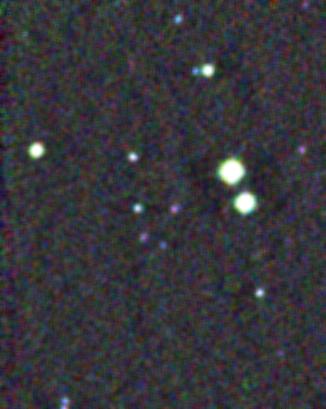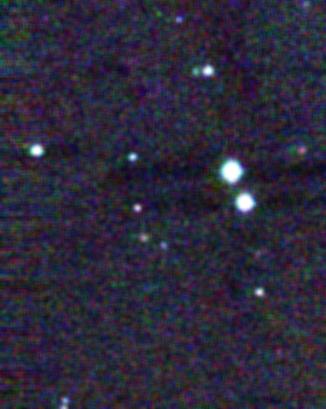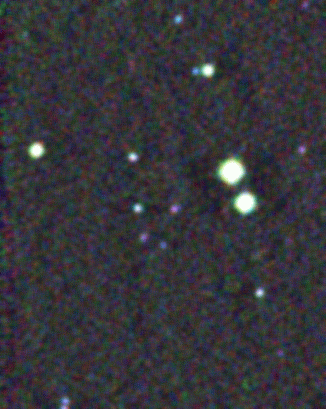 |
 |
| 18 December 1999 | 20 December 1999 |
 |
 |
| 18 December 1999 | 20 December 1999 |
One of the outstanding puzzles in astrophysics has been the nature of gamma-ray bursts. They appear without warning from random directions in the sky, and fade away in a few minutes. Theories abounded, ranging from objects falling onto neutron stars in our own Galaxy to violent events seen far across the Universe. New developments, especially the rapid localization ability of the BeppoSAX satellite using the X-rays emitted by the bursts, led in the last couple of years to the realization that bursts are very far away, some being billions of light-years off. Knowing where they are accurately enough to point optical telescopes has led to the identification of their fading optical counterparts (or afterglows). These two pictures compare the field of GRB 991216 (named after the date when the burst was observed) as observed in the near-infrared, 1.5 and 3.5 days after outburst. The color composite uses J,H, and K images (at 1.2, 1.6, and 2.2 microns) in the roles of blue, green, and red, showing more or less what we'd see if our eyes were sensitive to wavelengths three times longer than visible light. The counterpart is obvious in the first image, and gone in the second, having faded by at least a factor of six or 2 magnitudes. Actually it was gone 24 hours later, but there were thin clouds and the picture was cosmetically much uglier. Such rapid fading has been interpreted as seeing emission from a relativistic jet as it decelerates and thus beams its radiation over a much wider angle. The leading theory at the moment associates gamma-ray bursts with asymmetric supernova explosions, in which some of the star's mateerial is ejected in a jet close to the speed of light.
These pictures were made with the ONIS near-IR camera built by Ohio State University, at the 2.4-meter Hiltner telescope of MDM Observatory. A phone call from Jules Halpern at Columbia tipped me off to the outburst and motivated these observations, which are still among a handful of IR measurements of afterglows. As far as I know, there was no secure redshift measured for this object, but its optical colors indicate that it cannot have been beyond about z=7 (otherwise intergalactic hydrogen would have absorbed more of its red light). This field is reddened by foreground dust - the burst lies behind the Lambda Orionis star-forming region.
More information on gamma-ray bursts is available at the BATSE website (from a detector set on the Compton Gamma-Ray Observatory) plus the lone example to date of simultaneous optical and gamma-ray detection of a burst. A nice review article from Scientific American has been made available online. Real-time information on burst coordinates and followup observations may be found at the GRB Coordinates Network.
The following animated GIF (made using whirlgif) compares the two images, making it very obvious which object is fading away. The field of view shown is 98 by 122 seconds of arc.

Bill Keel's Home Page | Astronomical Image Gallery | Image Usage and Copyright Info | UA Astronomy
keel@bildad.astr.ua.eduLast changes: 1/2000 ©2000